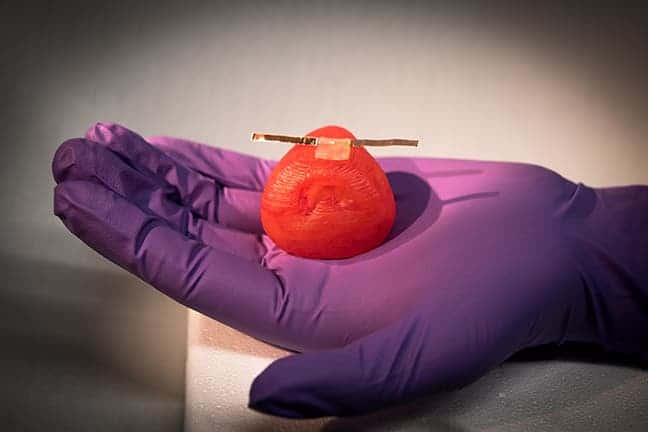The new organs that researchers have 3D printed don’t only look like the real deal, but they also feel like it.

3D printing has taken the world by storm, and medicine especially can benefit from the technology. So far, people have 3D printed human cartilage, skin, and even artificial limbs — and we’ve just started to scratch the surface of what 3D printing can do. Now, researchers from the University of Minnesota have developed artificial organ models which look incredibly realistic.
“We are developing next-generation organ models for pre-operative practice. The organ models we are 3D printing are almost a perfect replica in terms of the look and feel of an individual’s organ, using our custom-built 3D printers,” said lead researcher Michael McAlpine, an associate professor of mechanical engineering at the University of Minnesota’s College of Science and Engineering.
The 3D-printed structures not only mimic the aspect of real organs, but also the mechanical properties, look and feel of real organs. They include soft sensors which can be customized depending on the desired organ. The sensors offer real-time feedback on how much force is being applied to them, notifying doctors when they are close to damaging the organ.
The technology could help students get a better feel for real organs and learn how to improve surgical skills. For doctors, it could help them prepare for complex surgeries. It’s a great step forward from previous models of artificial organs, which were generally made from hard, unrealistic plastic.
“We think these organ models could be ‘game-changers’ for helping surgeons better plan and practice for surgery. We hope this will save lives by reducing medical errors during surgery,” McAlpine added.
In the future, researchers want to develop even more complex organs, as well as start incorporating defects or deformities. For instance, they could add a patient-specific inflammation or a tumor to an organ, based on a previous scan, enabling doctors to visualize and prepare for an intervention.
Lastly, this could ultimately pave the way for 3D-printing real, functioning organs. There’s no fundamental reason why we can’t do this, it’s just that we’re not there yet. This invention could be a stepping stone for such advancements.
“If we could replicate the function of these tissues and organs, we might someday even be able to create ‘bionic organs’ for transplants,” McAlpine said. “I call this the ‘Human X’ project. It sounds a bit like science fiction, but if these synthetic organs look, feel, and act like real tissue or organs, we don’t see why we couldn’t 3D print them on demand to replace real organs.”
The research was published today in the journal Advanced Materials Technologies.






